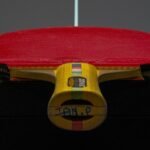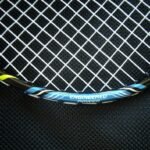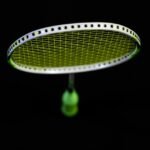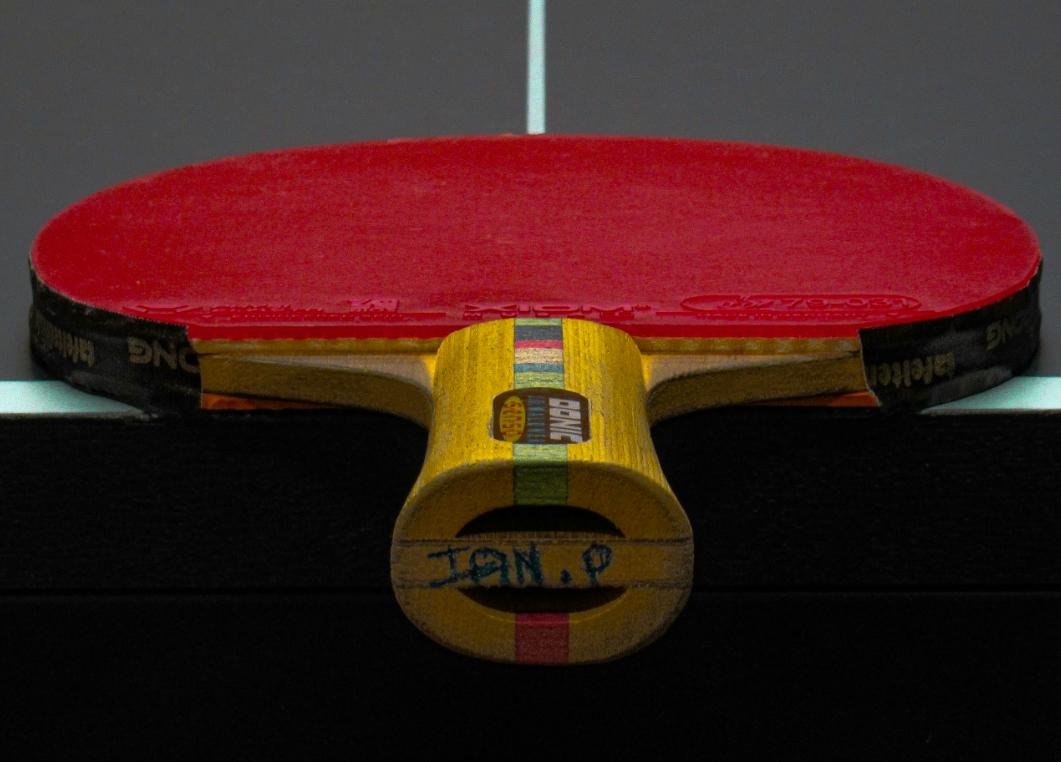Understanding the Basics of Ping Pong Rubber
Choosing the right ping pong rubber is essential for enhancing performance in the sport. The surface of the paddle has a significant impact on gameplay, as it affects spin, speed, and control. There are three primary types of ping pong rubber: smooth, pips-in, and pips-out. Each type possesses distinct characteristics that cater to various playing styles.
Smooth rubber, or inverted rubber, is characterized by a smooth surface that provides excellent grip on the ball. This type of rubber excels at generating spin, making it a preferred choice for players who rely on powerful offensive tactics. The elasticity of smooth rubber allows for better ball control, enabling players to execute a variety of strokes effectively. However, transitioning to or from smooth rubber can require adjustments in technique due to its sensitivity to incoming spin.
Pips-in rubber, on the other hand, features short, inward-facing pips. This type of rubber retains some spin capabilities while offering increased control. Players using pips-in can achieve a balanced approach, enhancing both defensive and offensive strategies. The design of pips-in rubber allows for better handling of incoming spins, providing an opportunity to counterattack effectively. This makes it suitable for intermediate-level players who are looking to develop their skills further.
Lastly, pips-out rubber has taller, outward-facing pips that reduce the amount of spin generated on the ball. While this could limit offensive capabilities, it offers advantages in defensive play, notably for blocking and returning shots. Pips-out rubber is often favored by players who engage in a defensive style of play, as it allows for effective returns on aggressive shots from opponents.
Understanding these fundamental types of ping pong rubber lays the groundwork for players to make informed decisions when selecting their equipment. Each type brings a unique set of benefits, tailored to different playing styles and preferences in the game.
Factors to Consider When Choosing Rubber
Selecting the right rubber for your ping pong paddle is crucial for enhancing your performance and overall enjoyment of the game. Several key factors can greatly influence your choice, including your playing style, skill level, and surface preferences.
Your playing style is perhaps the most significant consideration when choosing rubber. Players can be categorized into different styles, such as offensive, defensive, or all-rounders. Offensive players typically prefer rubber that offers higher speed and spin potential, often gravitating towards harder rubbers. This type allows for aggressive strokes and powerful shots. Conversely, defensive players may benefit more from softer rubbers which provide better control and a higher degree of spin for returning challenging shots. All-round players need a balance between speed and control, often opting for medium hardness rubbers that provide versatility.
Another important factor is the skill level of the player. Beginners might consider softer rubbers as they allow for greater control and ease in making contact with the ball. This is particularly useful for those still honing their techniques. Intermediate and advanced players often prefer harder rubbers, which can maximize speed and spin due to their greater responsiveness. However, it’s essential to work within your skill limitations to avoid overwhelming yourself with equipment that requires advanced techniques to handle effectively.
The surface preferences, or the choice between soft versus hard rubber, also plays a vital role. Soft rubbers generally allow for better grip and control, making them favorable for players who prioritize finesse over speed. On the other hand, hard rubbers create a faster ball response, beneficial for those looking to increase their offensive capabilities. Assessing these factors based on individual playing characteristics will assist in making an informed decision on the appropriate rubber for your ping pong paddle.
The Importance of Thickness in Rubber
The thickness of ping pong paddle rubber is a critical factor that influences a player’s performance, particularly regarding speed and control. Understanding the various thickness levels—thin (approximately 1.5 mm), medium (around 1.8 to 2.0 mm), and thick (exceeding 2.0 mm)—is essential for players aiming to enhance their game.
Thin rubbers are often favored by players who prioritize control and touch. With a lower thickness, these rubbers provide more feedback, allowing for precise shot placement and better handling of delicate strokes. They are suitable for defensive players or those who enjoy executing spin-heavy shots. Such players benefit from the increased sensitivity, which enables them to manipulate the ball’s trajectory effectively.
Medium thickness rubbers strike a balance between speed and control, appealing to a broader range of players. They offer a moderate level of speed while still providing sufficient feedback for effective ball control. This option is ideal for intermediate players who have a developed skill set and wish to explore a versatile playing style without sacrificing too much in either direction.
Thick rubbers, on the other hand, are designed for aggressive players who thrive on speed and power. These rubbers maximize ball speed, allowing for fast attacks and powerful hits. However, they come at the cost of some control, making them less suitable for beginners or those who rely heavily on placement and finesse. Advanced players may find that thick rubbers complement their fast-paced strategies and aggressive styles effectively.
Ultimately, the choice of rubber thickness is subjective and should be based on individual playing style, skill level, and personal preference. By understanding how each thickness affects gameplay, players can make an informed decision suited to their specific needs.
Examining Spin and Speed Ratings
Understanding the nuances of spin and speed ratings is critical when selecting the appropriate rubber for a ping pong paddle. Each rubber type brings unique characteristics that can significantly impact gameplay. The spin rating typically reflects the rubber’s ability to generate rotational force on the ball, enabling players to execute techniques such as topspin or backspin. Conversely, the speed rating indicates how quickly the ball can travel off the paddle, determined largely by the rubber’s hardness and the amount of energy it transmits upon impact.
Rubber designed for a high spin rating often features a tacky surface that helps grip the ball more firmly. This allows for enhanced control, allowing players to impart greater spin on the ball, which can be advantageous for aggressive offensive strategies. Players who prefer a spin-oriented playstyle should consider rubbers with a spin rating of 8 or higher on a standard 10-point scale. On the other hand, if the objective is to increase ball speed, players may opt for firmer rubbers with higher speed ratings, ideally above 8.0, to achieve rapid velocity during plays.
It is essential to balance these ratings according to individual skills and playing style. For example, a player with excellent control who focuses on placing their shots may benefit more from a rubber with a higher spin rating, while a more aggressive player may desire the quick transitions provided by a high-speed rubber. Consequently, an effective strategy when selecting rubber for your paddle is to analyze both spin and speed ratings together, ensuring that they complement each other to match your personal gameplay preferences. Ultimately, the ideal choice may vary from one player to another, highlighting the importance of testing different rubbers to find the perfect balance for one’s unique style and performance objectives.
Choosing Between Hard and Soft Rubber
When selecting a ping pong paddle rubber, one of the fundamental decisions players face is whether to choose hard or soft rubber. Understanding the differences between these two options is essential, as they significantly impact touch, speed, and spin during play.
Hard rubber is characterized by its denser composition, which generally lends itself to generating greater speed and spin. Players who favor aggressive, offensive styles of play typically benefit from hard rubber since it allows for quicker shots and a more dynamic ball trajectory. However, the trade-off for this speed is often reduced control; thus, mastering precision with hard rubber requires practice and skill. A hard sponge layer, often measuring 45 degrees or more in hardness, can aid advanced players who want to leverage their techniques to produce powerful topspin or backspin shots.
Conversely, soft rubber features a more pliable sponge, which enhances touch and control, making it easier for players to execute delicate shots and engage in strategic rallies. This type of rubber is usually recommended for defensive or control-oriented players, as its cushioning effect allows for better handling of incoming shots and facilitates soft placements. Players employing a spin-centric style can also find advantage in soft rubber, as it provides a unique grip that aids in imparting spin while maintaining accuracy. Typically, soft rubber sponges range from 35 degrees to around 40 degrees in hardness.
Ultimately, choosing between hard and soft rubber depends on your playing style and skill level. Beginners often thrive with soft rubber to improve their control and understanding of the game, while advanced players may seek the explosive qualities of hard rubber to enhance their offensive plays. Both options have their merits, and players should consider testing different types to determine what aligns best with their specific needs and preferences.
Consider Your Playing Style: Defensive vs. Offensive
When selecting the perfect ping pong paddle rubber, it is vital to assess your playing style, as this directly influences the performance of your game. Players typically fall into two main categories: defensive and offensive. Each style demands a distinct type of rubber that can enhance the player’s strengths and mitigate their weaknesses.
Defensive players tend to focus on returning the ball with precision, utilizing tactics that emphasize control and placement rather than power. Their primary goal is to outlast their opponents by employing strategic shots that keep the opponent on the defensive. To achieve this, defensive players should consider rubbers that offer high levels of control and spin, such as medium-soft sponge and thinner rubber layers. These materials enable sensitive touch and enhanced placement, allowing a defensive player to effectively maneuver the ball with finesse. Additionally, using a slightly tacky rubber can help in generating spin, which is crucial for disrupting the opponent’s rhythm.
Conversely, offensive players thrive on power and speed, aiming to dominate the game through aggressive shot-making. This style often relies on quick, forceful strikes to outpace the opponent. For such players, rubber options with high elasticity and a thick sponge layer are recommended, as these characteristics facilitate faster ball speeds and explosive spins. Offensive rubbers are typically softer and designed to enhance the player’s ability to generate significant power and spin, thereby increasing the effectiveness of attacking shots. Tools like highly elastic topsheets can further elevate offensive strategies, which can be a decisive factor in competitive matches.
Ultimately, understanding whether you identify as a defensive or offensive player will guide you to select the appropriate rubber that not only complements your style but also enhances your overall performance on the table.
Popular Rubber Brands and Their Features
When selecting the perfect ping pong paddle rubber, numerous brands offer specialized features tailored to different playing styles. Among these, a few stand out due to their popularity and unique offerings. One of the most widely recognized brands is Butterfly, known for its high-quality rubbers that emphasize speed and spin. The Tenergy series, for instance, is particularly favored by advanced players for its exceptional grip and ability to enhance ball control, making it a top choice for offensive playstyles.
Another reputable brand is Donic, which features a variety of rubbers suitable for all player levels. The Donic Acuda series is particularly noteworthy for its balanced performance attributes, combining both speed and spin, making it versatile for both beginners and intermediate players. These rubbers often come with a soft sponge that allows for excellent ball feedback, thus enabling players to develop their skills effectively.
Stiga is also a prominent name in the ping pong community. They offer a range of rubber options like the Stiga Boost series, which caters to players who prefer faster gameplay. With a unique manufacturing process, Stiga rubbers are designed to provide significant speed, making them ideal for offensive players looking to dominate the game. Furthermore, the enhanced durability of these rubbers ensures that players get longevity out of their equipment.
Finally, Yasaka is an established brand that has been around for decades and is famous for its Mark V rubber. This rubber is highly esteemed for its balance between control and spin, making it a preferred choice for players who enjoy a more tactical approach to the game. Its reliability across different styles makes it a staple in many players’ gear.
In conclusion, understanding the offerings of these popular ping pong rubber brands can significantly aid in making informed decisions tailored to specific playing styles, ensuring an optimized performance on the table.
Testing and Experimenting with Rubber
Choosing the right table tennis paddle rubber is crucial for enhancing your game and personalizing your playing style. One effective way to ensure you select the perfect rubber is to conduct thorough testing and experimentation. This approach allows players to gain firsthand experience with different rubbers, helping to identify which ones align with their specific preferences and performance needs.
Begin by exploring various types of rubber, which can be categorized primarily into two types: inverted and pimpled. Each offers different characteristics in terms of spin, speed, and control. When testing, consider acquiring several rubber sheets with varying features to give yourself a broad range of options. Many reputable vendors offer trial periods for their products, which allows you to try out different rubbers before committing to a purchase. This can help you avoid the common pitfall of investing in a rubber that doesn’t suit your play style.
To effectively test rubber, set up specific criteria that align with your playing style. Pay attention to aspects such as spin capability, speed, and overall comfort when applying strokes. Regularly compare your performance during practice sessions while using different rubbers, as this will help you get a feel for how each option impacts your game. Keep notes on your observations, including which rubbers allow you to execute particular techniques more effectively.
Furthermore, seek feedback from fellow players or trainers who may offer valuable insights based on their experiences. By engaging with the table tennis community, you can gain a broader understanding of the advantages and disadvantages of various rubbers. Ultimately, the key to selecting the right rubber lies in personal experimentation and informed decision-making, allowing for a tailored approach to improving your performance on the table.
Maintenance and Longevity of Ping Pong Rubber
To ensure that your ping pong rubber remains in optimal condition, implementing a regular maintenance routine is essential. Proper care not only enhances the performance of the rubber but also significantly extends its lifespan. One of the most effective ways to maintain ping pong rubber is through diligent cleaning after each use. Accumulated dust, perspiration, and residues from table tennis balls can negatively impact the rubber’s grip and overall effectiveness.
Utilizing a damp sponge or a specialized rubber cleaner can help remove these substances. It is advisable to gently wipe the rubber surface in a circular motion. This technique prevents the rubber from being tugged or stretched, which can lead to deterioration over time. Avoid using abrasive materials or harsh chemicals, as they can degrade the rubber and compromise its performance.
In addition to regular cleaning, proper storage plays a crucial role in the longevity of ping pong rubber. It is best to store paddles in a cool, dry environment, away from direct sunlight, as prolonged exposure to heat and UV light can warp the rubber. Furthermore, keeping the paddle in a protective case when not in use can prevent damage from external elements or accidental impacts.
Another consideration is the longevity of the rubber by regularly checking for signs of wear and tear. If you notice the rubber losing its tackiness or developing cracks, it may be time for a replacement. Choosing high-quality rubber and following these maintenance strategies can ensure that your equipment remains in peak playing condition. By attending to both cleaning and storage, you can greatly enhance the durability and performance of your ping pong rubber.






